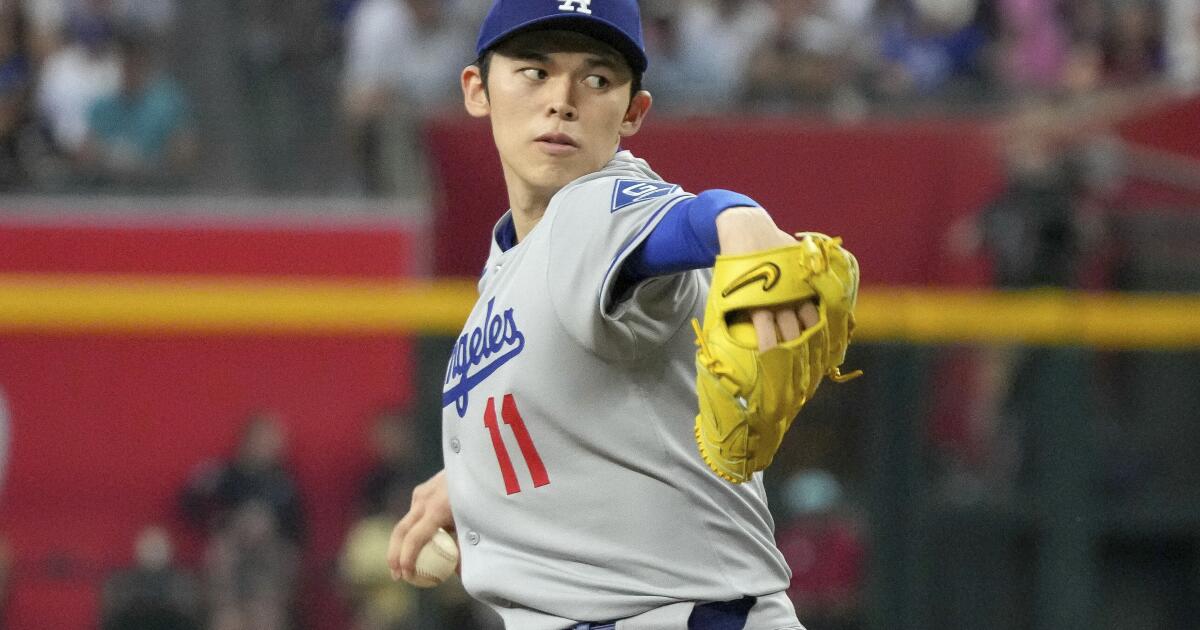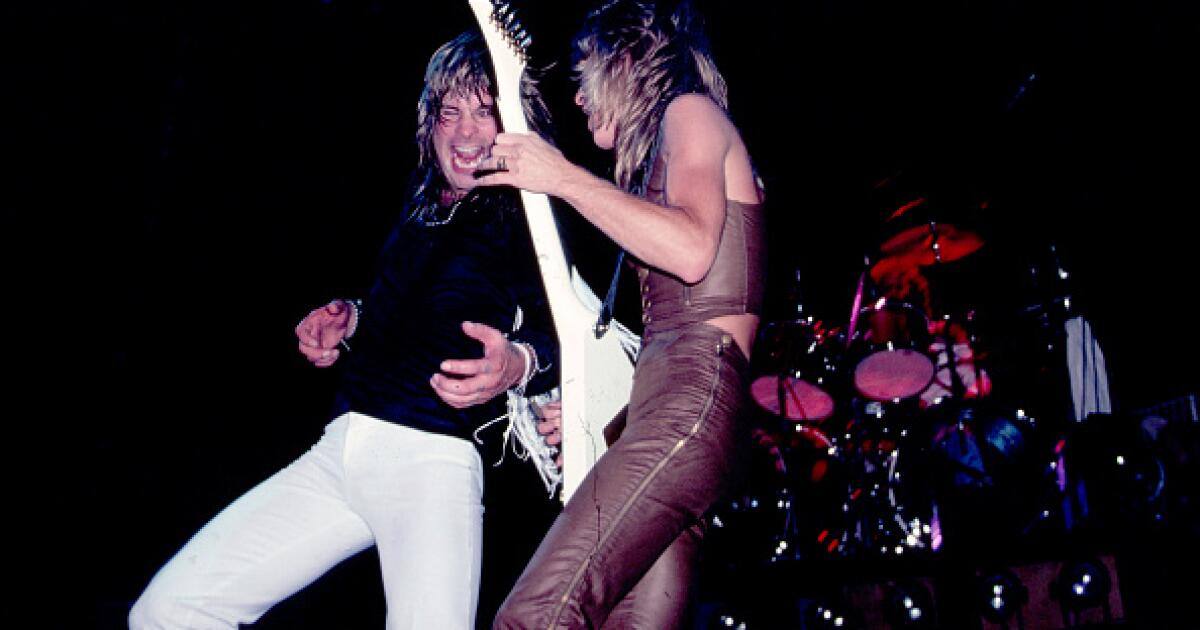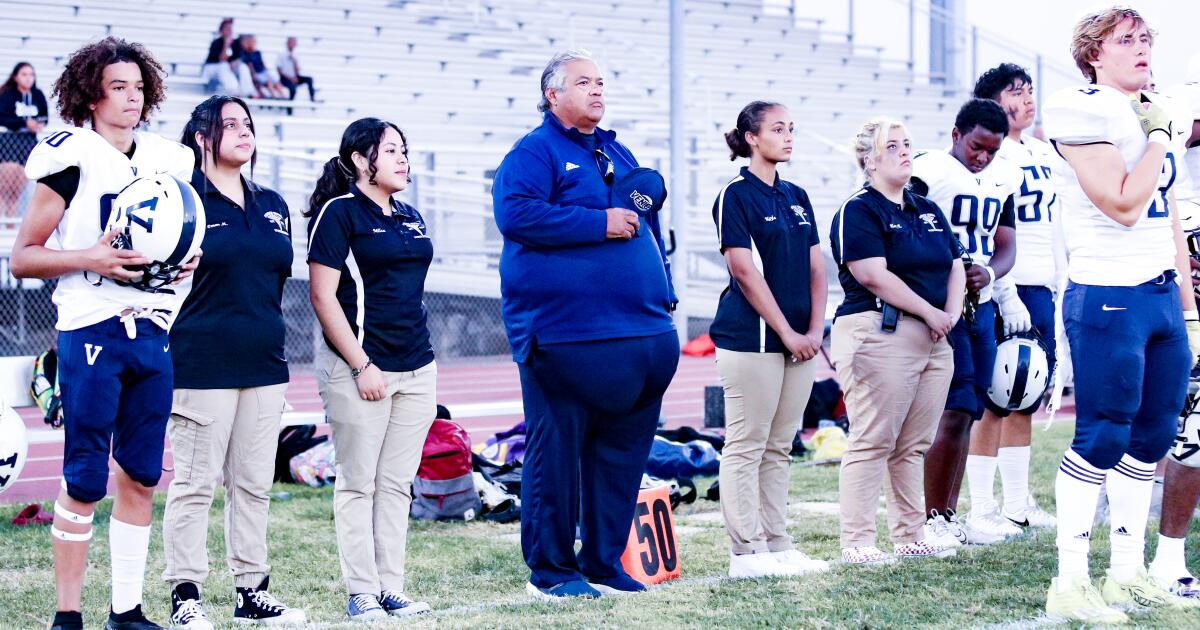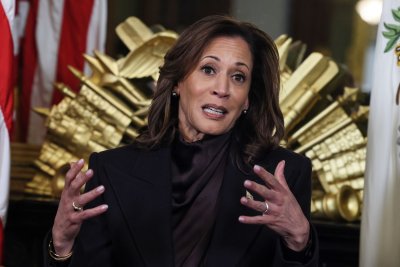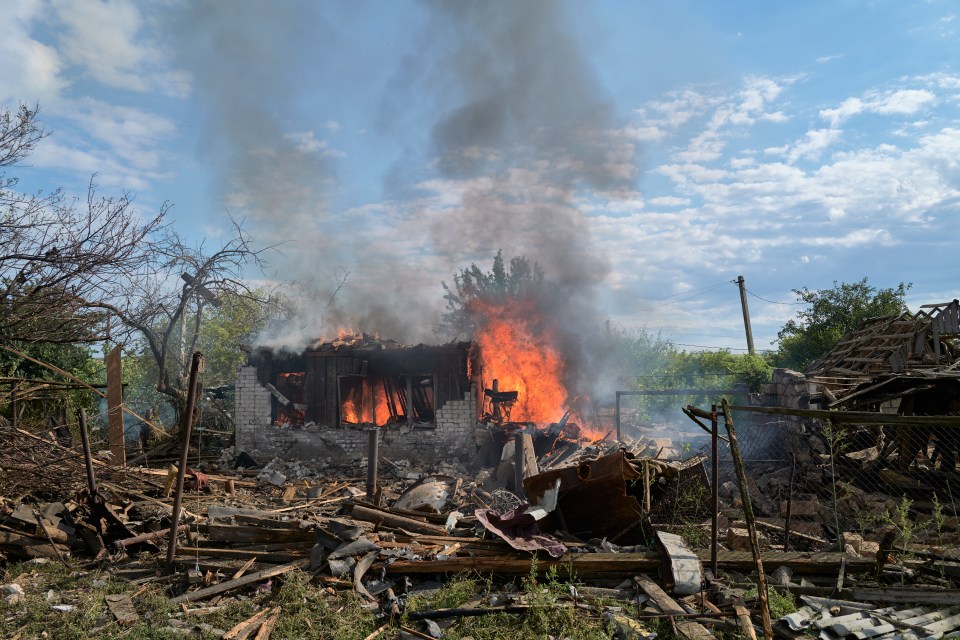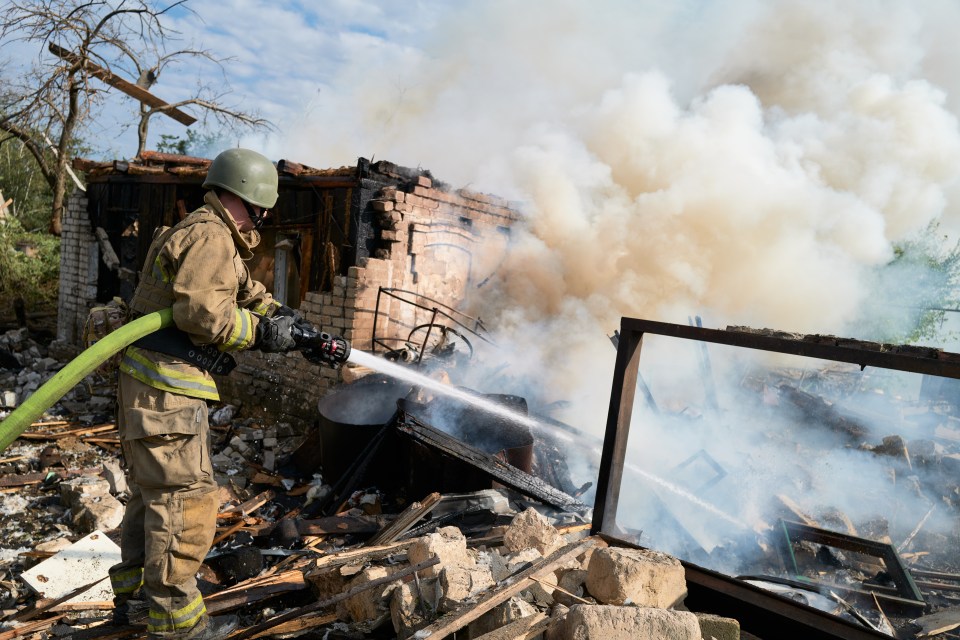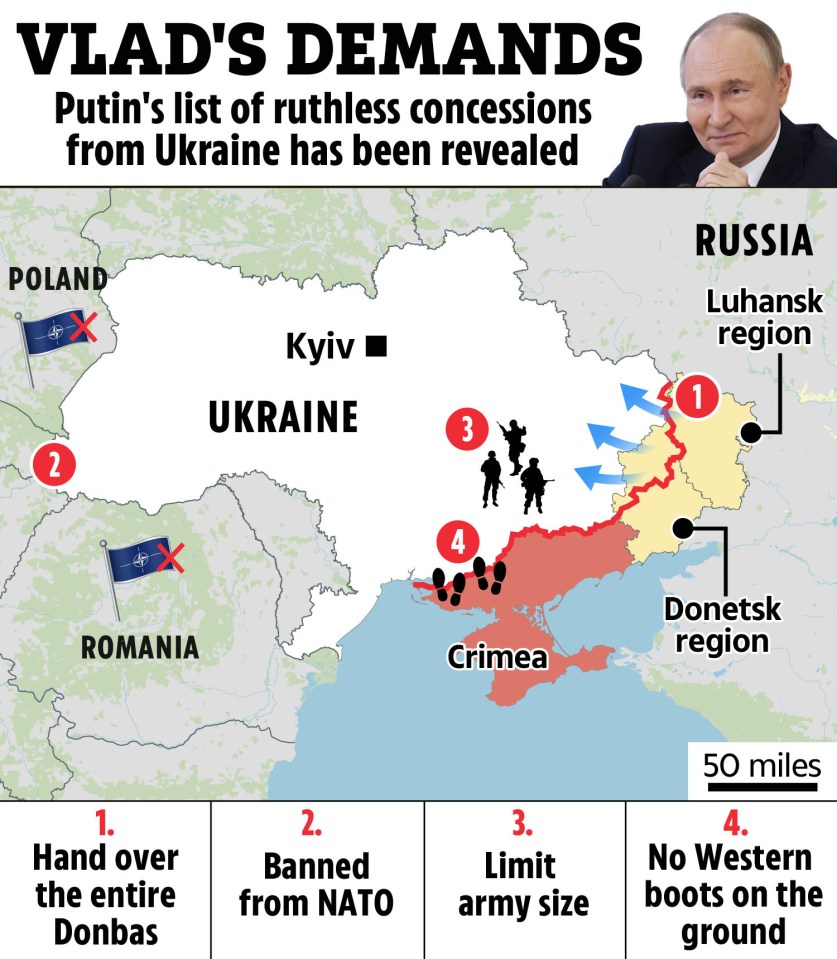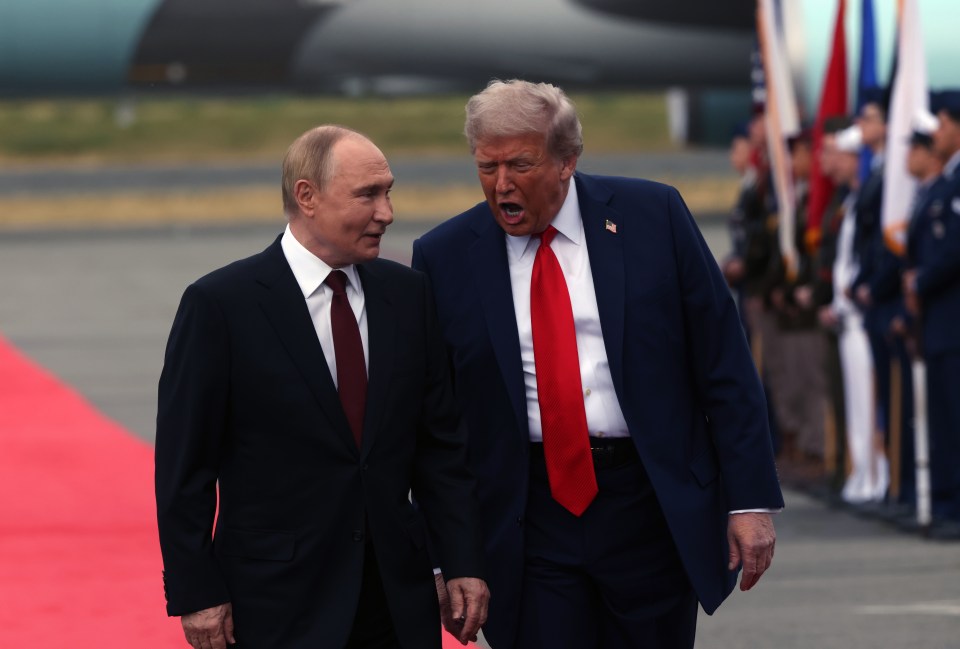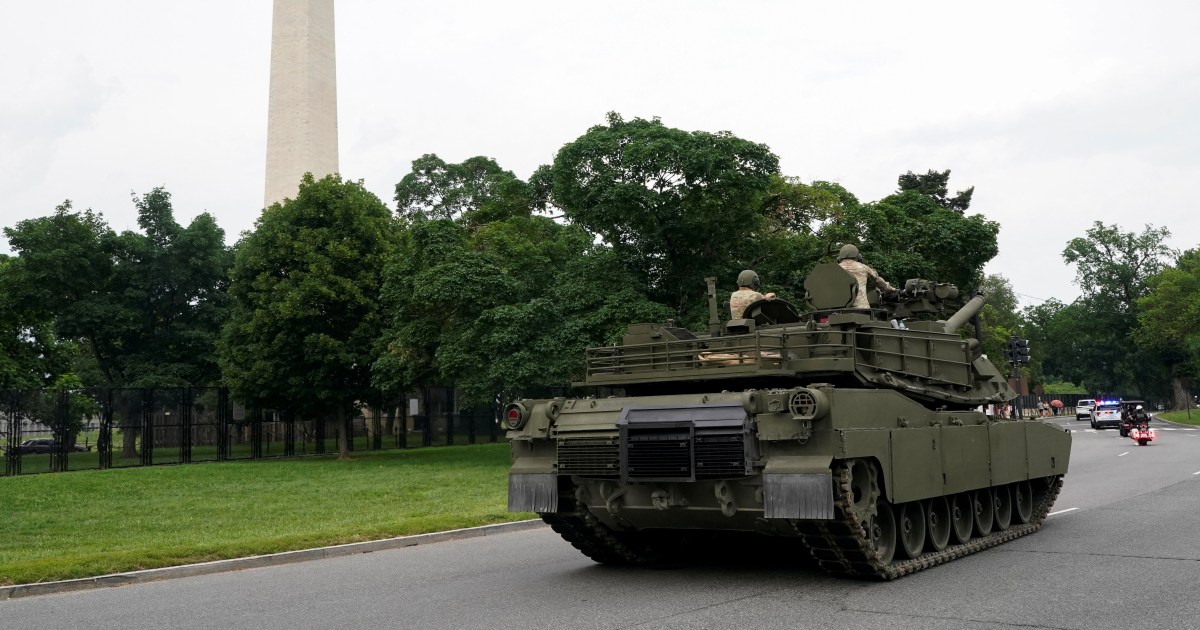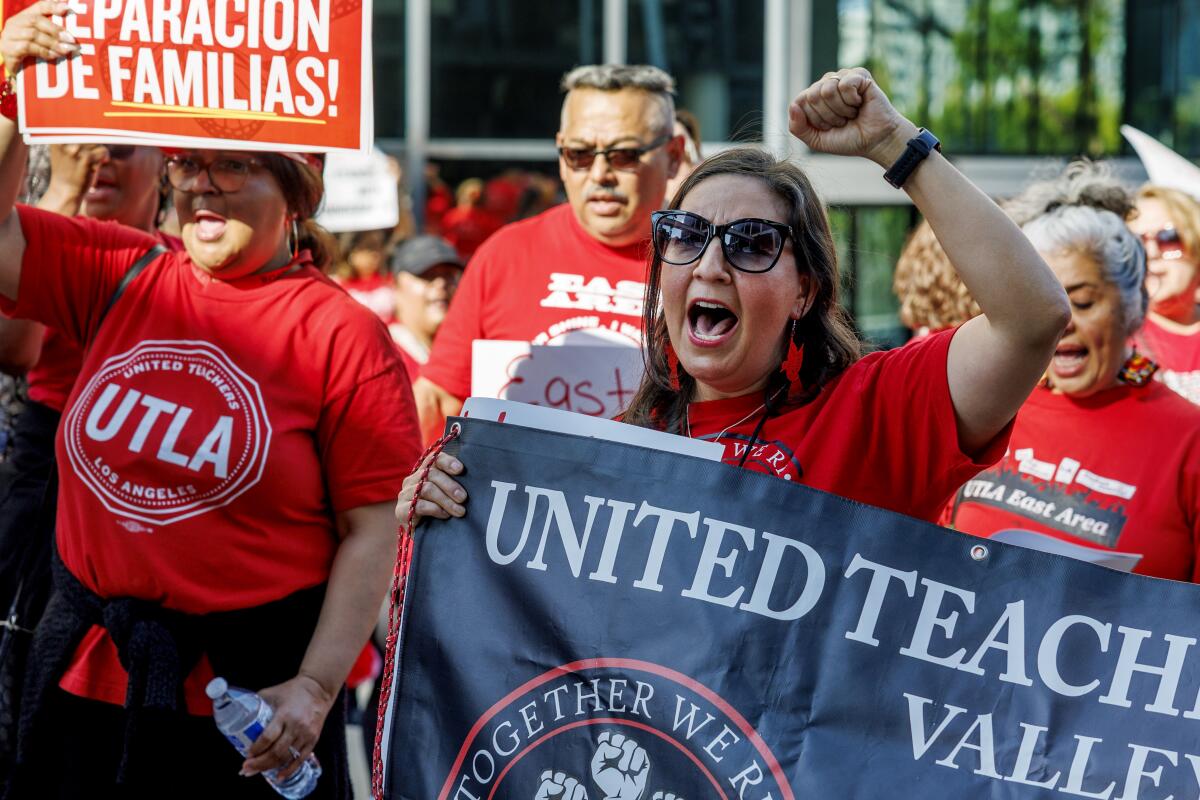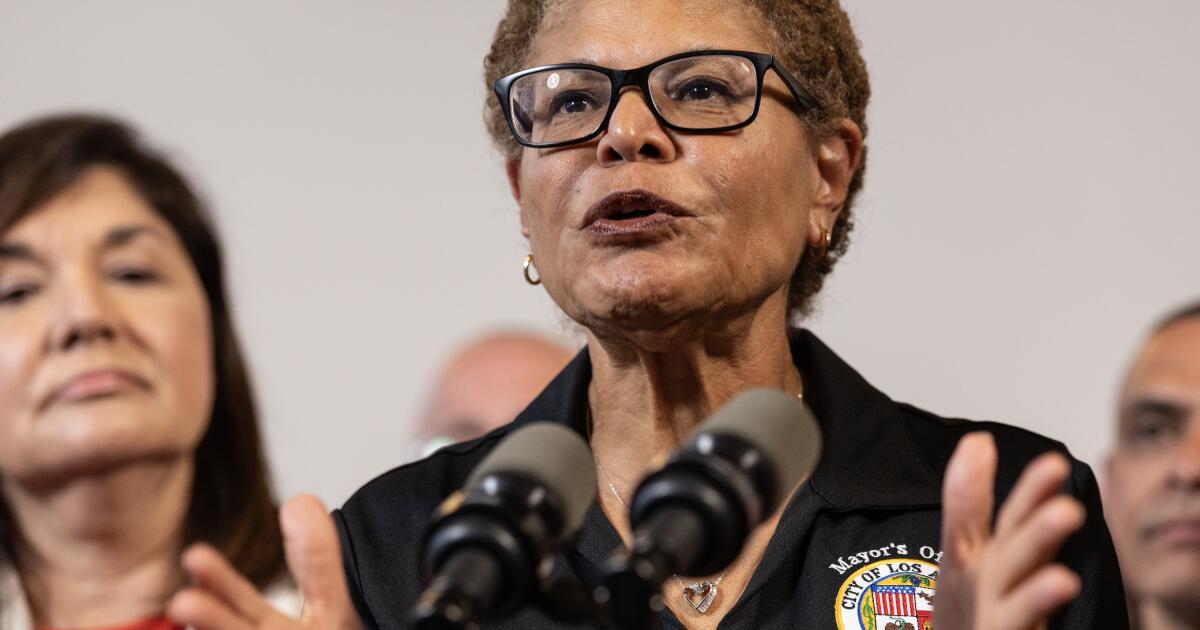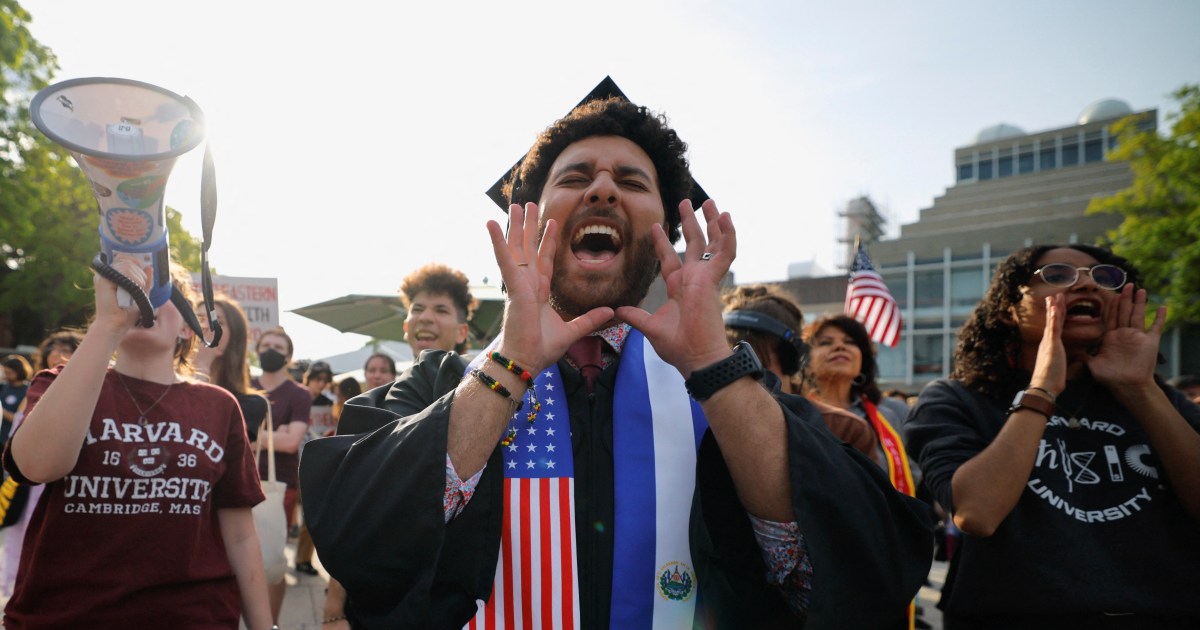Dodgers bullpen is a mess. Can Roki Sasaki’s return provide relief?
Dave Roberts often refers to his bullpen hierarchy as something of a “trust tree,” with branches of relievers he can trust in leverage spots.
Right now, however, it’s been more like a shriveled-up houseplant. Barren, depleted and long-shunned from the sun.
On the season, the Dodgers’ 4.33 bullpen ERA ranks 21st in the majors. Since the start of September, that number has climbed to a stunning 5.69 mark. Closer Tanner Scott has converted less than one-third of his save opportunities, his ERA rising to 4.91 after his latest meltdown on Tuesday. Top right-hander Blake Treinen had been the losing pitcher in each of the Dodgers’ five defeats before that, sending his ERA to a career-worst 5.55.
Plenty of others have been responsible for the Dodgers’ late-game incompetence. Kirby Yates has flopped as a veteran offseason signing. Michael Kopech has struggled through injuries and a lack of reliable command. Rookies like Jack Dreyer, Edgardo Henriquez and the since-demoted Ben Casparius have regressed after promising flashes earlier this summer. And the lone reinforcement the front office acquired at what now feels like a regrettably quiet trade deadline, Brock Stewart, is uncertain to return from a bothersome shoulder problem.
It leaves the Dodgers with only one full-time relief arm sporting an ERA under 3.00 this season — Alex Vesia, who has a 2.62 mark in 66 appearances.
It has turned the final days of the regular season into an all-out manhunt for even the slightest of trustworthy playoff options.
“What does that mean?” manager Dave Roberts said, when asked what qualifies as “trust” right now. “It means guys that are gonna take the mound with conviction. That are gonna be on the attack. That are gonna throw strikes, quality strikes, and compete. And be willing to live with whatever result.”
On Wednesday, that’s the backdrop against which Roki Sasaki rejoined the Dodgers’ active roster — the raw and developing 23-year-old rookie pitcher, coming off a five-month absence because of a shoulder injury, returning in hopes of supplying Roberts’ crippling trust tree with an unexpected limb.
Sasaki’s return was not supposed to be this important. Up until a couple weeks ago, his disappointing debut season seemed likely to end with a stint in the minors.
Yet over the last 15 days, circumstances have changed. Sasaki rediscovered 100-mph life on his fastball. He excelled in two relief appearances with triple-A Oklahoma City. And suddenly, he seemed like a potentially better alternative to the slumping names that have repeatedly failed on the Dodgers’ big-league roster.
Thus, the Japanese phenom is back again, activated from the IL before Wednesday’s game as Yates, who has a 5.23 ERA this year and was slipping out of the Dodgers’ postseason plans, was placed on the IL with a hamstring strain.
“I just think [he needs to focus on] giving everything he has for an inning or two at a time, and let the performance play out,” Roberts said of Sasaki. “Just go after guys, and be on the attack.”
Sasaki’s revival began earlier this month, when he went to Arizona after four poor starts in a minor-league rehab assignment to work with the organization’s pitching development coaches.
At that point, Sasaki had lost his tantalizing velocity, hardly even threatening 100 mph since his adrenaline-fueled debut in Tokyo back in March. His command was just as shaky, averaging more than 5 ½ walks per nine innings in his first season stateside. Even his pitch mix required an examination, after his predominantly fastball/splitter arsenal was hammered in both the majors (where he had a 4.72 ERA in eight starts to begin the season) and the minors (where he had a 7.07 ERA in his first four rehab starts) by hitters who could too easily differentiate his stuff.
“Me, him and his translators went in the lab and sat down and watched video for a few hours, and just talked,” said Rob Hill, the Dodgers’ director of pitching who worked with Sasaki at the club’s Arizona facility. “It wasn’t as much solving this like, master plan or whatever. It was moreso helping him actualize the things that he was seeing.”
In Hill’s view, Sasaki’s mechanics had suffered from a shoulder injury that, even before this year, had plagued him since his final season in Japan.
While the two watched film, Hill said they found discrepancies between things Sasaki “still almost thought he was doing” in his delivery, but weren’t translating in how he actually threw the ball.
“I think a lot of it just came from his body changing, the way he was throwing due to throwing hurt for probably a couple years,” Hill said. “He knew what he wanted to do, but he couldn’t quite tap into the way to do it.”
What followed was a series of mechanical tweaks that got Sasaki’s fastball back around 100 and his trademark splitter to more closely mirror his four-seamer when it left his hand. Sasaki also added a cutter-like slider, giving him another weapon with which to confuse hitters and induce more soft contact.
When the right-hander returned to the minors, he struck out eight batters over a solid 4 ⅔-inning, three-run start on Sept. 9. He then impressed with two scoreless appearances in relief last week, after club executives asked Sasaki to experiment in the bullpen.
Now, he is rejoining the Dodgers for the final five games of the season. The team is hopeful that his small sample size of recent success has made him a legitimate postseason relief option.
“I guess it’s fair to say I’m just going to throw him in on the deep end,” Roberts said of how he will use Sasaki going forward, noting there aren’t many “low-leverage” opportunities in an end-of-season division race.
“If we’re expecting him to potentially pitch for us in the postseason, they’re all leverage innings. So I don’t think we’re going to run from putting him in any spot.”
Odds are that Sasaki won’t be a cure-all for the Dodgers’ late-game woes. A pitcher of such little experience and developmental uncertainties is anything but a lock to post zeroes in the playoffs.
Still, the team will take whatever bullpen help it can get. Already, Clayton Kershaw has made himself available for relief appearances and could pitch in late-inning leverage spots in October. Emmet Sheehan also will join the bullpen mix come the playoffs, likely as a multi-inning option to piggyback with starters.
In the meantime, the club is searching for even a couple more reliable arms — just one or two branches on the bullpen’s hierarchy tree for Roberts to trust.
It wasn’t supposed to be this way. The Dodgers’ sudden need for someone like Sasaki is a reflection of the roster’s underlying flaws. But he will try taking on a potentially critical role in a rookie season that once seemed lost.
“He’s been in the ‘pen for the triple-A team, and he’s been really good,” Roberts said. “So I’m looking forward to seeing it with our club.”
